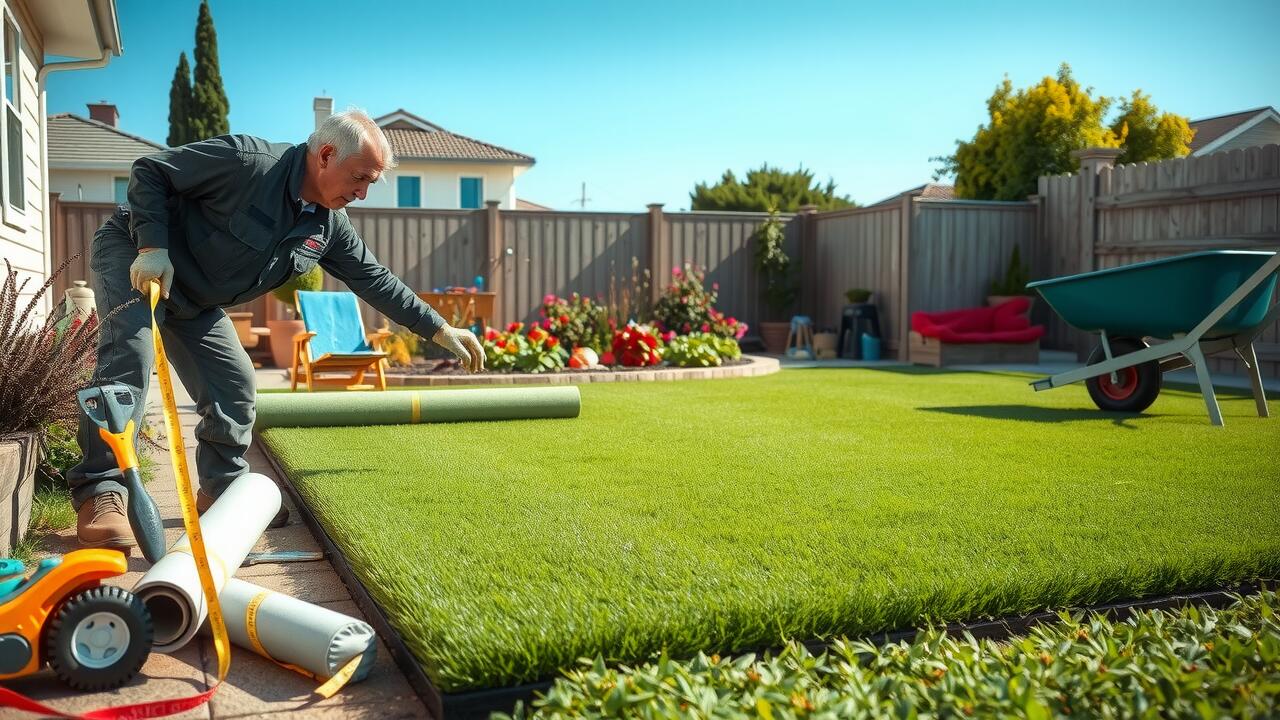
Fertilizing the Soil
Fertilizing the soil before turf installation is crucial for promoting healthy growth and establishing a robust root system. Adding nutrients to the soil ensures that the grass has the necessary elements to thrive once it is laid down. Testing the soil beforehand can help determine the existing nutrient levels and any deficiencies that may need to be addressed through fertilization.
Selecting the right type of fertilizer also plays a significant role in the success of your turf installation. A balanced fertilizer containing nitrogen, phosphorus, and potassium will support overall grass health. It is vital to follow the manufacturer’s recommendations for application rates to avoid over-fertilizing, which can lead to an unhealthy lawn and environmental issues.
Choosing the Right Fertilizer
Selecting the right fertilizer is crucial for successful turf installation. A balanced fertilizer containing nitrogen, phosphorus, and potassium (N-P-K) promotes healthy grass growth and establishes a robust root system. A soil test can provide valuable insight into nutrient deficiencies, allowing homeowners to choose a fertilizer that addresses specific needs. It is essential to apply the fertilizer according to the recommended rates, as over-fertilization can lead to nutrient runoff and environmental issues.
Timing also plays an important role. Ideally, fertilizing should occur just before or during the turf installation process. This timing ensures that the grass has immediate access to nutrients, facilitating rapid establishment and vigorous growth. Choosing a slow-release fertilizer can provide a steady supply of nutrients over time, making it a smart choice for new turf. Proper application enhances the overall health and longevity of the lawn, ultimately resulting in a vibrant and resilient landscape.
Installing a Weed Barrier
Installing a weed barrier is an essential step in the turf installation process. This material acts as a protective layer that prevents weeds from growing through the soil and competing with the turf for nutrients and water. By blocking sunlight and inhibiting weed growth, a weed barrier can help create a healthier environment for the new grass to establish itself.
There are various types of weed barriers available, including fabric and plastic options. Fabric barriers allow water and air to reach the soil while providing adequate protection against weeds. When choosing a barrier, ensure it is durable enough to withstand the elements and install it properly for optimal results. The right weed barrier can significantly enhance the longevity and appearance of the turf after installation.
Benefits of Using a Barrier Fabric
Using a weed barrier fabric during turf installation offers several advantages. This material acts as a protective layer that prevents weeds from penetrating and competing with the grass for essential nutrients and water. By blocking sunlight, it helps maintain a clean surface, promoting healthy turf growth. This ensures that the newly laid grass can establish itself without the hindrance of unwanted vegetation.
In addition to weed control, a barrier fabric contributes to improved soil health. It allows for proper water drainage while retaining moisture essential for turf growth. The fabric can prevent soil erosion and keep the topsoil intact, supporting the healthy development of the roots. Overall, incorporating a weed barrier is a strategic step to ensure the long-term success and vitality of your turf installation.
Compacting the Soil
Compacting the soil is a crucial step in any turf installation project. Proper compaction helps create a stable foundation for the grass to thrive. Without adequate compaction, the soil may settle over time, leading to uneven surfaces and potential water pooling. Using a plate compactor or roller can make the process efficient, ensuring that the soil is densely packed before the turf is laid down.
Different soil types may require specific techniques for effective compaction. For example, sandy soils might need less compaction compared to clay soils, which tend to compact more easily. It’s important to check the moisture content of the soil; it should not be too wet or too dry for optimal results. Taking these factors into account during the turf installation will enhance the overall health and longevity of your new lawn.
Techniques for Effective Compaction
Compacting the soil is a crucial step in the turf installation process. A well-compacted surface ensures that the soil provides a stable foundation for the grass, reducing the risk of settling later on. To achieve effective compaction, start by using a plate compactor or a roller. These tools apply even pressure across the surface, which helps eliminate air pockets. It’s important to work in sections, compacting each area thoroughly before moving on to the next.
After the initial compaction, it can be beneficial to moisten the soil slightly. Adding a bit of water can help achieve better density and reduce dust. As you compact the soil, be mindful of the desired final grade and make adjustments as needed. Proper compaction not only prepares the site for turf installation but also contributes to healthy grass growth by improving soil structure and drainage.
FAQS
What should I put under turf before laying it?
Before laying turf, it’s essential to prepare the soil by fertilizing it, installing a weed barrier, and compacting the soil for optimal growth.
Why is fertilizing the soil important before laying turf?
Fertilizing the soil provides essential nutrients that help the turf establish strong roots and promote healthy growth once it’s laid.
What type of fertilizer should I choose for my turf?
Choose a fertilizer that is specifically formulated for lawns, ideally one with a balanced ratio of nitrogen, phosphorus, and potassium to support turf health.
What is the purpose of a weed barrier under turf?
A weed barrier helps prevent weed growth by blocking sunlight and inhibiting weed seeds from germinating, which can compete with your turf for nutrients and water.
How do I compact the soil before laying turf?
You can compact the soil using a plate compactor or a hand tamper, ensuring that the surface is level and firm to provide a stable foundation for your turf.
